I have now gone to my second museum in Paris on this trip – Paris’ modern art museum, which is housed in Pompidou Center, named after Georges Pompidou, France’s President from 1969-1974.
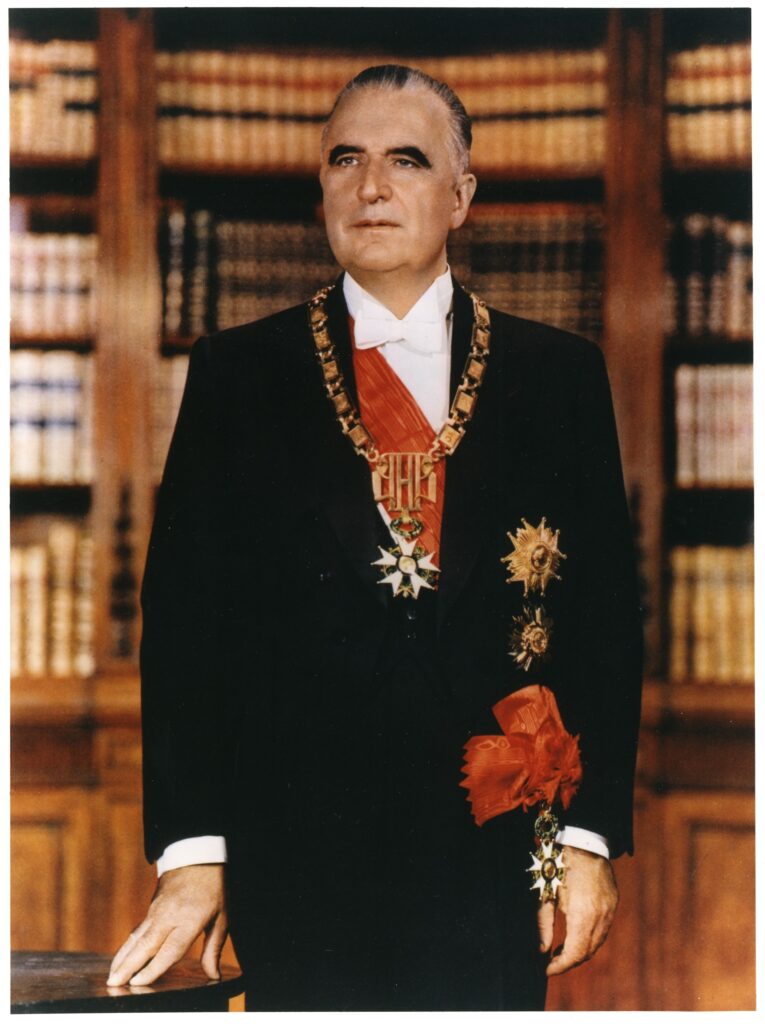
Prior to being President he was de Gaulle’s Prime Minister for six years, serving longer in that role than anyone else in French history. In addition to his political achievements – he is still held in high esteem — , he was a “man of letters,” having authored Anthology of French Poetry and an avid supporter of contemporary art.
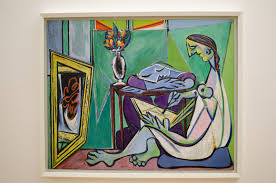
The Museum of Modern Art is the second biggest modern art museum in the world, second only to MOMA, the Museum of Modern Art in New York City. And I was surprised to learn that it is the 10th most visited art museum in the world. It now has branches in Metz (France), Malaga (Spain), Brussels (Belgium) and Shanghai (China).
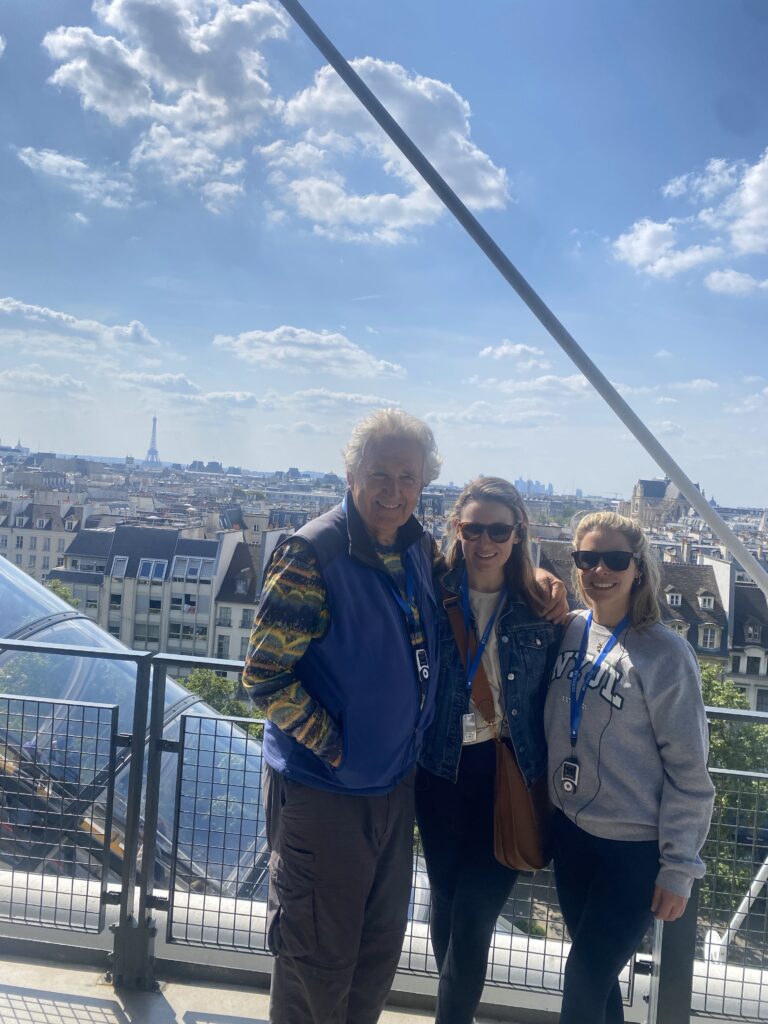
Before I describe some of what we saw, let me set the scene for you. First, I did not go alone. I had the pleasure of visiting the Museum with my daughter Kelsey and her friend Caroline. What a treat! Secondly, we hired a guide to help us see the Museum. On previous visits to Paris Kelsey discovered Alban and he is truly a wonderful guide. That helped a lot, because otherwise, at least for me, the museum can be overwhelming.
Finally, I have to describe for you the building that the Museum sits in – the Pompidou Center. It is amazing.
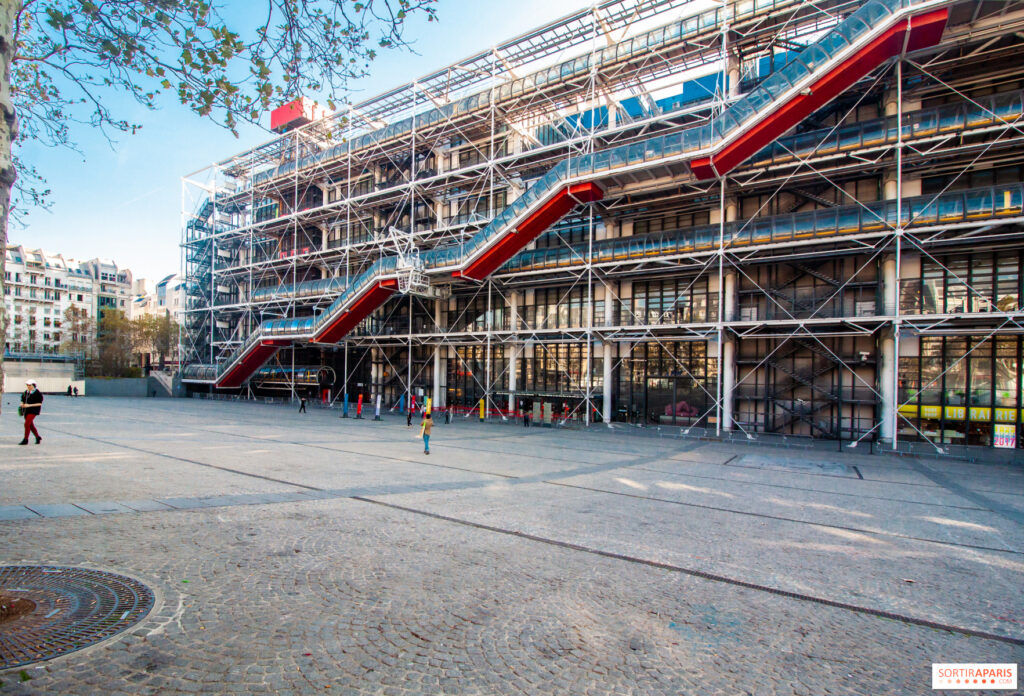
The building itself is an architectural marvel in several ways. First it is so out of place in downtown Paris. There is no other building in Paris that is remotely like this one. Secondly, by design it was constructed to have form follow function — show on the exterior all of the systems that need to be in place to make a building like this work. The circulation system, the mechanical system and the structural system are all exposed for the viewer, in full view on the outside of the building. It is an inside-out building.

In addition, they colored coded the ducts. Green ones are for plumbing. blue ducts are for climate control. electrical wires are encased in yellow ducts. And all circulation features like escalators are in red.
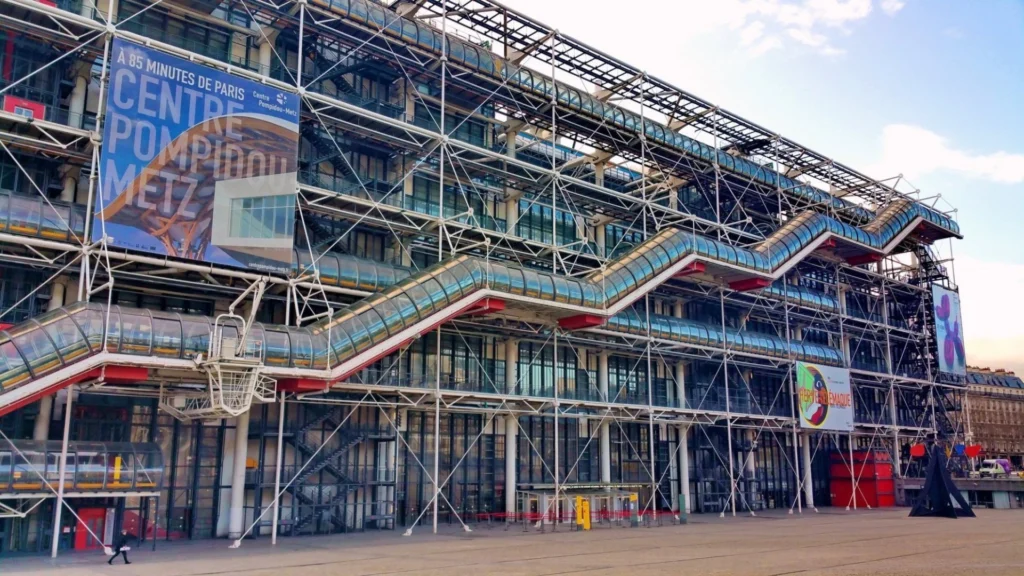
When first constructed the building was very controversial. Many felt that it looked like a big department store. Parisians disliked it. It was panned by others. It is reported that National Geographic described the reaction to the design as “love at second sight.” The French magazine Le Figaro declared: “Paris has its own monster, just like the one in Loch Ness.”
It took some 20 years before plaudits started coming for the architectural design of the building. The architectural team that designed the building had won an international competition with some 681 entries. For the first time in France international architects were invited to sit on the selection panel. They included Oscar Niemeyer and Philip Johnson, of The Glass House fame in New Canaan, Connecticut.
The building was designed to house not just the Museum of Modern Art, but also the very large Public Information Library and the IRCAM (center for music and acoustic research). And this gets to what maybe the most important insight about the building, and that refers to the layout of the grounds surrounding the building.
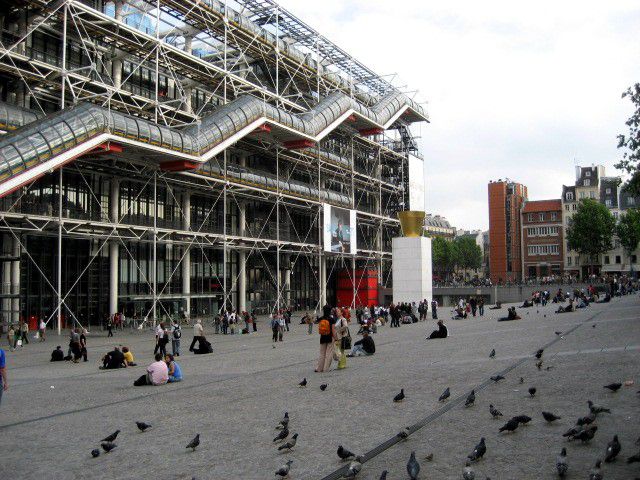
The Place Georges Pompidou is very large and it faces the building. It is a totally open square, if you will. No buildings or structures of any kind. It is inviting as a place to relax and hang out. And, most importantly, it slopes.

Yes, it slopes downhill toward the huge Pompidou Center building. Yesterday when I was there, hundreds of couples, families with children and others were sitting or sprawled out on the stone surface of the sloping square. Often street performers dot the square, along with musicians, mimes, jugglers, and sketch artists.
The entrance to the Pompidou Center building is at least one floor, if not two, below the street level. This was deliberate so that people would feel welcome to come inside.
What George Pompidou wanted to create was a museum that anyone, regardless of their income or status in life, could come and enjoy. He wanted to make coming to an art museum easy and friendly and welcoming. He wanted to make it “the living heart of creation.”
Wow! And this is all a prelude to the works of art in the museum!
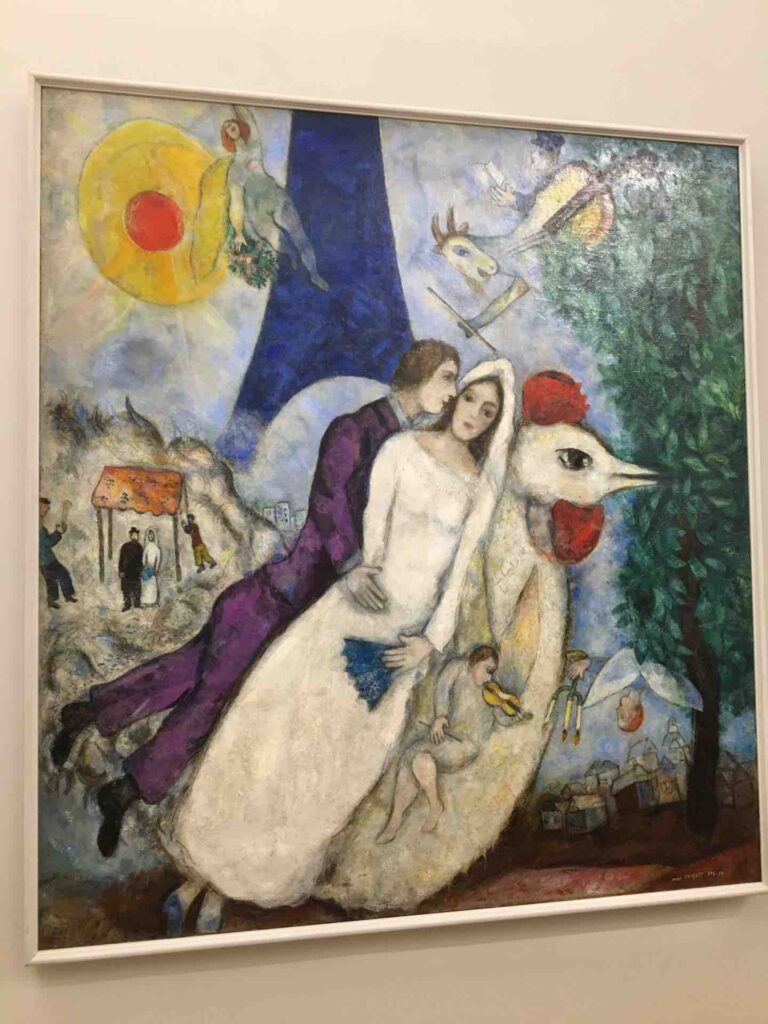
The art works start in 1905 and go up to the present day. You get to explore art that is representative of Post Impressionism, Fauvism, Cubism, Abstract Art, Applied Art, Expressionism, Dada, Surrealism, and Abstract Surrealism.
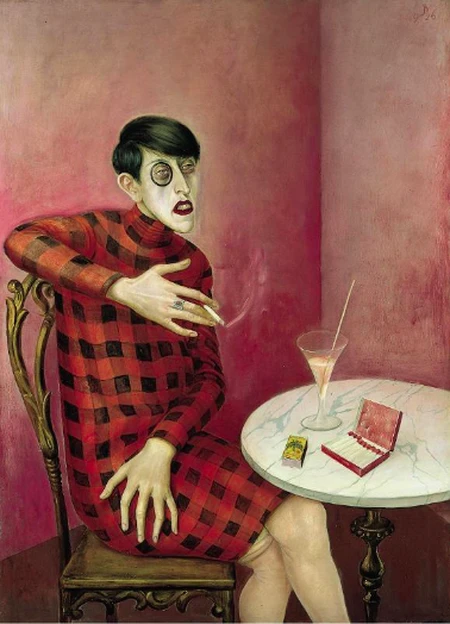
In addition, the museum has exhibits of more modernists, ones who are part of Abstract Expressionism, Pop Art, Post Modernism and Contemporary Art.
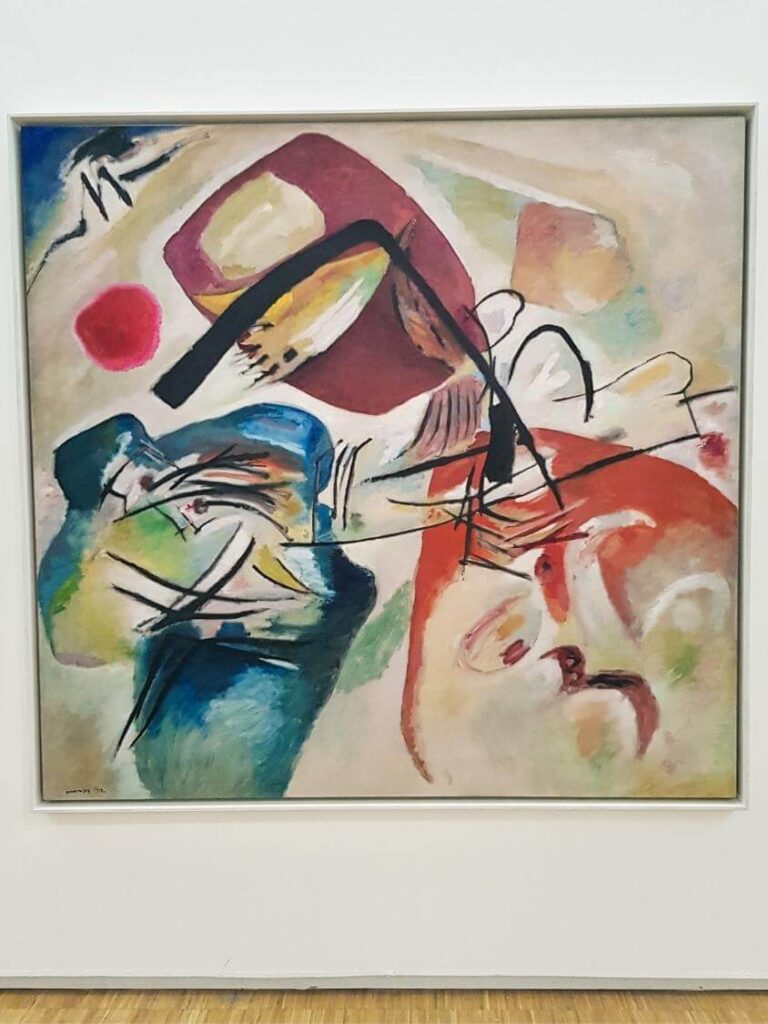
You see works of art by Matisse, Picasso, Dali, Warhol, Chagall, Kandinsky, Georges Braque, Mondrian, Brancusi, Klee, Calder, Pollock, Robert Rauschenberg and many others – some well known and many who are not.
I must admit that I have not been exposed to the more recent “post modern” world of art. This was an eye-opening event for me – seeing and experiencing “installations” (arrangements that take up a whole room), digital media (holograms and multimedia displays), “assemblages” (recycling junk), natural objects (items placed in unusual settings), interaction (where viewer does something over and above staring at it), “deconstruction” (wildly taking something out of its normal context), “conceptual art” (taking a pair of items to produce a different effect), “performance art” (mixed media which is often interactive) and “playful art” (designed to put a smile on your face).
This was a little bit of a mind blower for me. And, I thought I was hip!
Bottom line, what the Pompidou Center has done is transfer a museum, which is often an elite monument, into a people place – one with social and cultural interchange. This turned out to be much more than a visit to a museum of modern art.
We were lucky to experience it because later this year it is going to close for the next four years for renovation.

Neil,
No one gets more out of their travels than you. The research that you put into your visits prior,, during and afterwards is to be commended.
Your blogs are remarkably interesting as well as informative with your words and pictures..
Enthusiasm and thirst for knowledge just oozes through your words.
Lucky Kelsey and Caroline getting to share the his experience with you!
Hey, NP, I found this very educational and full of joy and excitement for someone like me who began life’s cultural journey in Pine Lawn, Missouri. Thanks. The photos really helped tell your story. Well done!
It’s going to be closed for the Olympics next year?? That’s shocking.
My wife and I spent a month on a home exchange in an apartment located about two blocks from the Pompidou Center, which we would walk past almost daily. We often ate our lunch on the sloping area in front of the museum, or enjoyed a glass of wine outdoors in front of a nearby cafe. We had bought a monthly pass to several museums in Paris, so we visited the museum often during our stay. But I have to say that our favorite Paris museum is still the D’Orsay!
You make it sound very enticing and it will be on my bucket list. Can’t say my visits to the Louvre were as exciting, however we thoroughly enjoyed our visit to the Musee d’Orasy that was as enticing as the Pompidou appears.
Interestingly I feel we’ve seen the Kandinsky before, perhaps it was during our visit to the Hermitage or in one of the museums in Kiyv, which would not be surprising as he was born in Russia and lived in Ukraine.
My employer HSBC built the then world’s most expensive building (1985 Hong Kong) and Norman Foster was the Architect. Queen Elizabeth cut the ribbon on opening day. Foster’s style is somewhat like that of the Pompidou. Did you see his exhibit there?
As a side note Foster also designed the latest bridge (Millennium Bridge) over the Thames. It wobbled annoyingly when walked upon when it opened and he is now referred to as Sir Wobbly’ and the Bridge is “the wobbly bridge”, but it no longer wobbled when Liz and I walked across it a few years back.
Neil, I agree with the others, esp. Sandi Bell. You make it all so interesting. We missed this particular one-and now are sorry we did not see it. We too loved the D’Orsay! Keep on writing of y our experiences. We love to hear about them. You are likely not aware, but our neighbour at Outdoor Resort, Rich Hansett passed away yesterday. Much loved and instrumental when they re-did the kitchen in the clubhouse. Also lived in Washingotn State. We had a chance to visit hi in Jan. When we visited you. So glad we did. Just thought you’d like to know. We await your next exploration.
Great report, Neil. As usual. Reading them makes one feel like wanting to meet and know you! As you may call, my wife was an artist; but we sadly were in Paris before this Museum’s time. Now I wanna go! Keep writing! —Baze
Interesting to read that Philip Johnson played a part in the creative selection of architecture. Seeing his Glass House will always be a special experience for me!